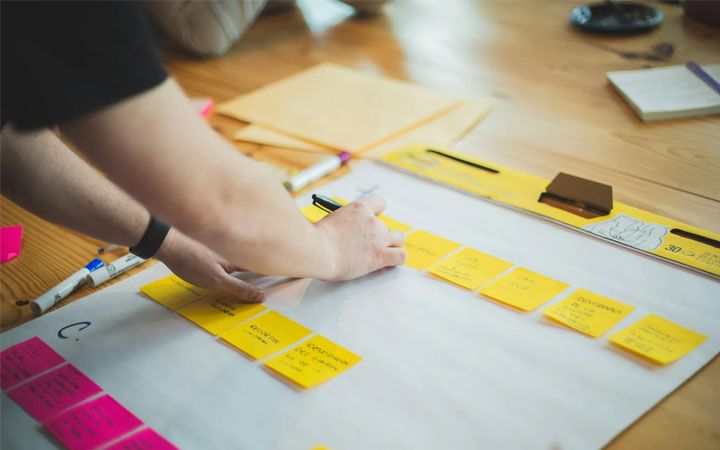As the global landscape shifts, the need for organizations to prove their continued relevance and effectiveness has become more pressing. At UNITAR, we remain steadfast in our commitment to delivering impactful, sustainable change, even in the face of challenging circumstances. This article explores how our Learning Solutions team is pioneering a new approach to capacity-building—Strategic Learning Design (SLD). By focusing on the underlying complexities of the problems at hand and integrating diverse perspectives, SLD ensures that our learning interventions lead to meaningful, long-term results. It’s not just about delivering training; it’s about fostering real behavioural change and equipping organizations to navigate an ever-evolving world with lasting solutions. Through this innovative methodology, we continue to demonstrate the value of strategic, results-oriented learning in advancing the Sustainable Development Goals.
Achieving the Sustainable Development Goals requires more than just well-intentioned programmes—it demands strategic learning approaches that drive real, measurable change.
This is why we have been pioneering Strategic Learning Design (SLD), a methodology that helps organizations move beyond traditional training and develop smarter, more impactful learning interventions. By integrating perspectives such as systems thinking, behavioural science, and problem framing, SLD ensures that learning initiatives address root causes, adapt to complexity, and lead to lasting change.
We have distilled 9 key principles of Strategic Learning Design
- Involve learning designers early in project design: Not just as trainers but as strategic partners in capacity-building initiatives. Too often, learning experts are brought in after a project is already designed, limiting the potential for true behaviour change and long-term impact. By embedding designers into project planning from the start, focusing on sustainable change rather than one-off events, we can ensure that capacity-building efforts lead to real-world sustainable impact.
- Solve the right problems: “Successful problem solving requires finding the right solution to the right problem. We fail more often because we solve the wrong problem than because we get the wrong solution to the right problem” - Russel Ackoff.
At this important early stage, it is key to ask strategic questions like “What problem are we trying to address through training?” “Is there another way to look at it?” “How complex is the problem?” “Who do we need to talk to to understand it better?”. - Withhold solutions before you understand what you are trying to solve: Premature solutions can often derail important thinking during project planning. It is an easy habit to jump at potential solutions and design around them; however through withholding these preconceived ideas, we enable ourselves to see solutions naturally emerge once problems are better understood.
- Consider the complexity of problems and their potential unintended consequences: If problems are complex, it is unlikely that one-off and linear solutions will be effective. Far too often, we see complex issues tackled with overly simplistic thinking, which can even make the problems worse. There are plenty of examples of unintended consequences to well-intentioned solutions in today’s world. However, there are steps and processes which can be taken to prevent and mitigate them. Even a simple brainstorm of “what could go wrong here if we implement this solution” is not common practice in today’s solution-led world.
- Avoid analysis paralysis: While it is important to understand problems well and hear diverse perspectives from various stakeholders, it is also important to avoid getting stuck within the analysis phase. What can be helpful, is to integrate analysis, feedback and interaction throughout the design process through interviews, surveys or co-design workshops.
- Prototype and test: “If a picture is worth 1000 words, a prototype is worth 1000 meetings”. Tom & David Kelley. Agility, testing and iterative design are key to generating solutions effectively and efficiently. Testing designs by creating simple prototypes early on in the processes ensures that users and other stakeholders agree on the way forward. These can be as simple as a series of sketches, mockups or design prototypes. Instead of describing hypothetical solutions, prototyping tests ideas in real life-contexts and is done repeatedly throughout the project cycle. The feedback and insights from testing can help you make better decisions about your product or service without the time-consuming and often expensive route of building the entire product before receiving feedback.
- Involve user perspectives throughout the process: In a project design process, it is common to have people in the room such as project managers, senior leaders, donors and subject matter experts. This can easily lead to critical design decisions being made without the involvement of a key perspective - the end-user. It is important to understand these rich human insights and involve them throughout our design and implementation processes to ensure our solutions are suitably and effectively tailored to our target audiences.
- Training is about changing behaviours, not overloading with information: Consuming information, even through different interactive digital formats like video or animation, does not necessarily result in meaningful behavioural change. Far too often, courses are designed with the aim of changing behaviours but have very little effect. Training can be more than a mandatory compliance activity or a tick-box exercise and in its full potential, is a powerful tool to solve some of our biggest challenges.
- Realize when training is not the (only) solution to the problem: For learning designers to really be of strategic value to others, we need to be able to distinguish when training simply will not solve the problem alone or at all. The risk of accepting training orders even when we know that training is not the solution, risks that learning designers are seen as ineffective, when in reality, training was never going to solve the problem. We must also recognise when training needs to be complemented with systemic or environmental solutions, such as changing policy, funding streams, or incentive structures to have a greater impact.
In today’s fast changing world, training organizations such as UNITAR can offer real value as strategic problem solvers to the institutions and systems that they work with to build capacities towards a more peaceful and sustainable future.


